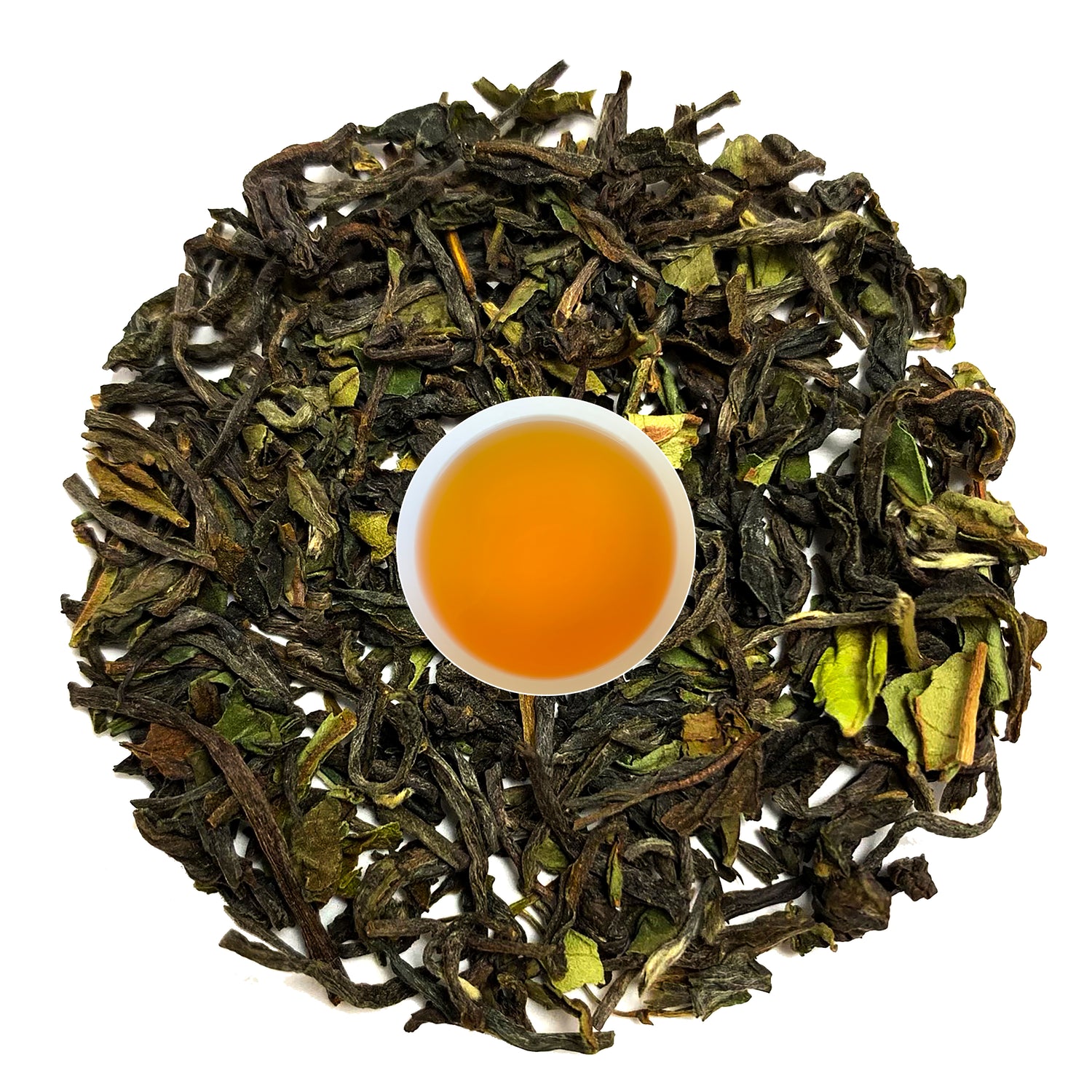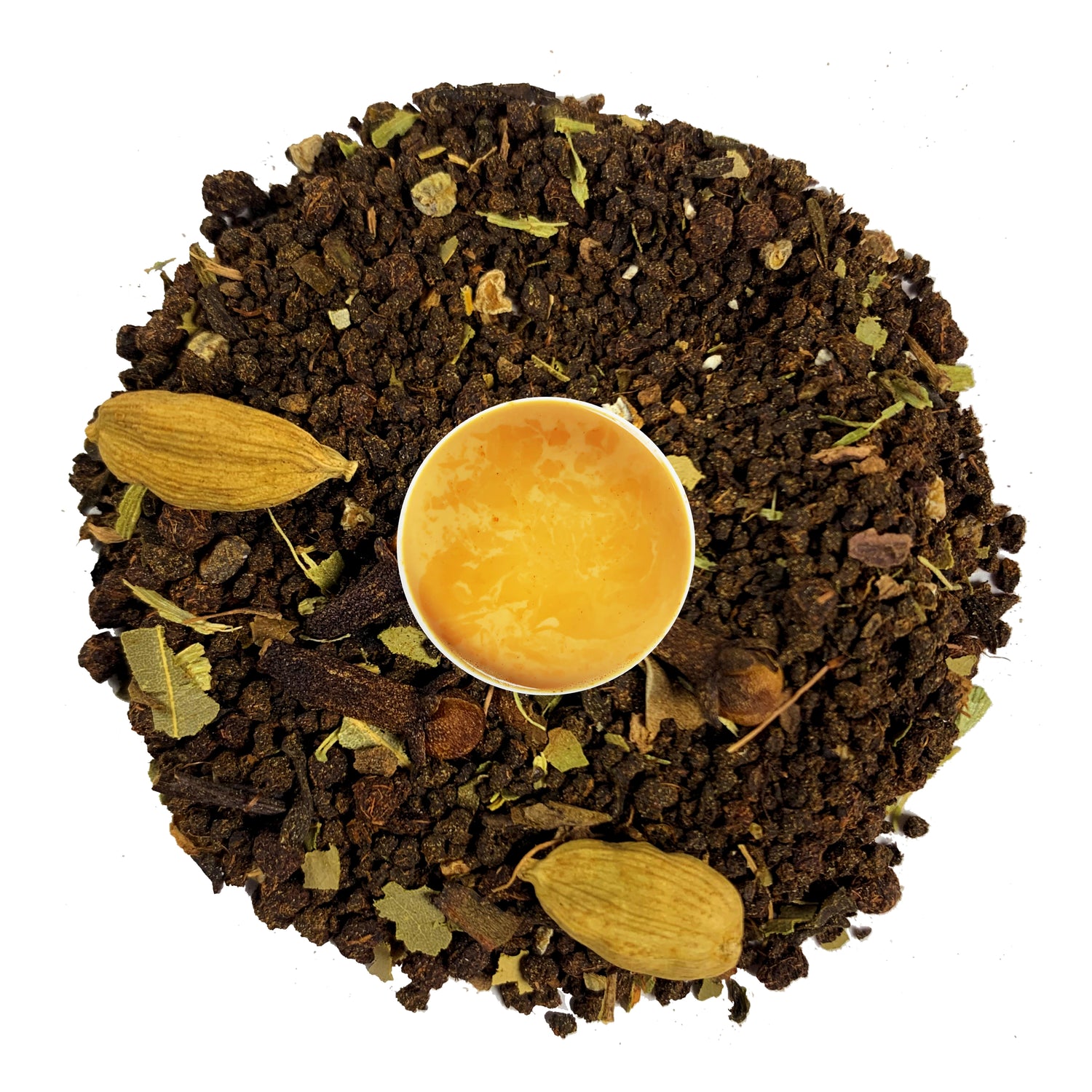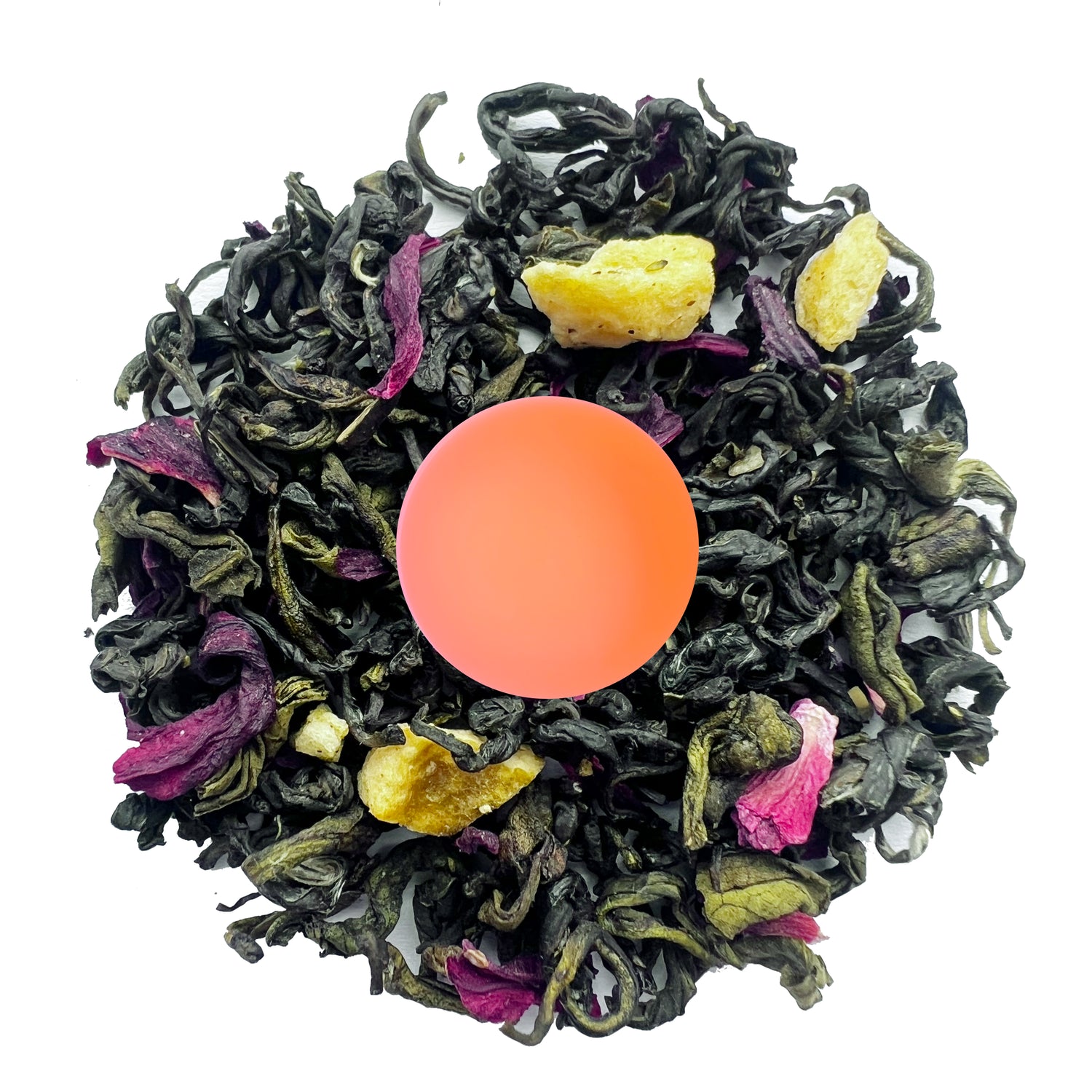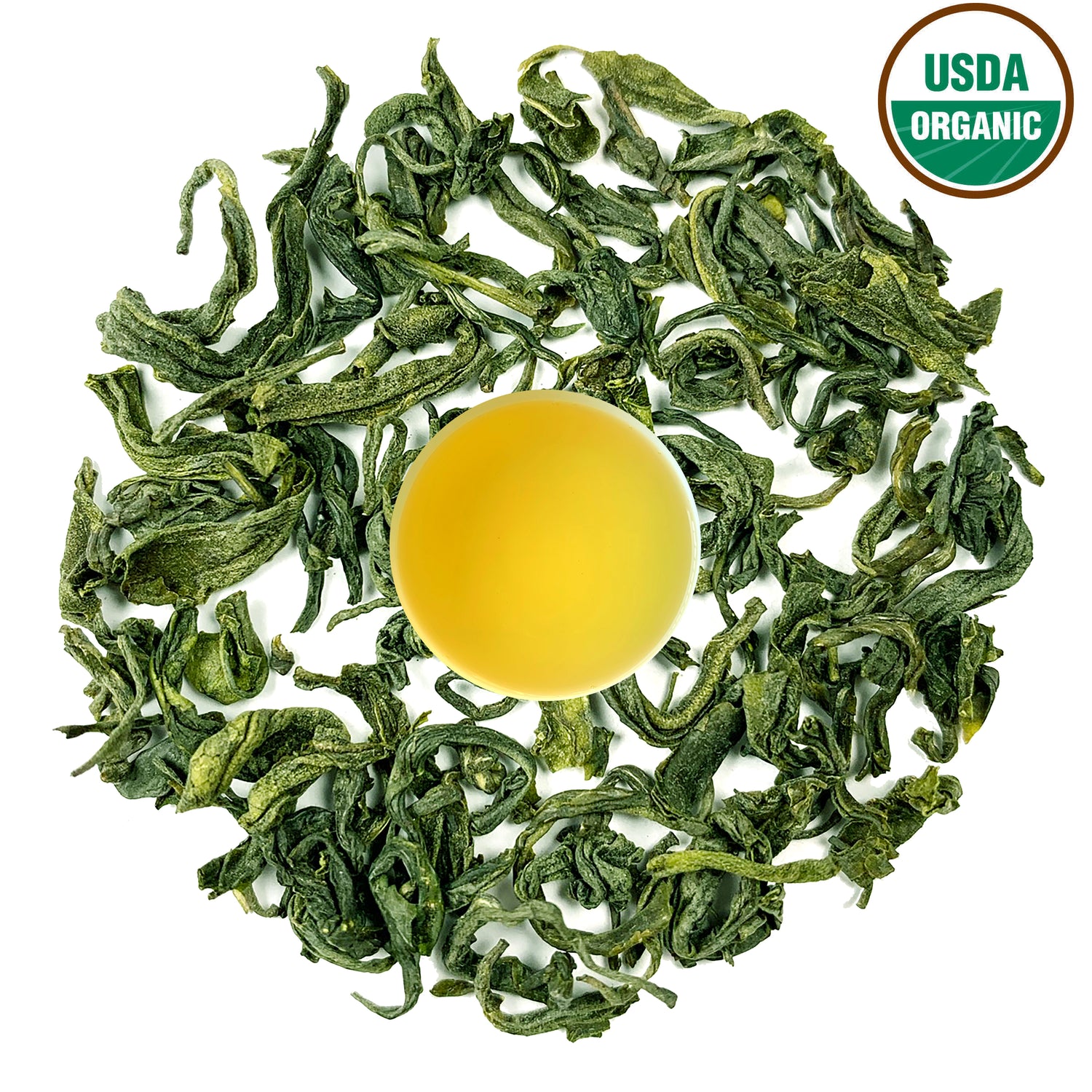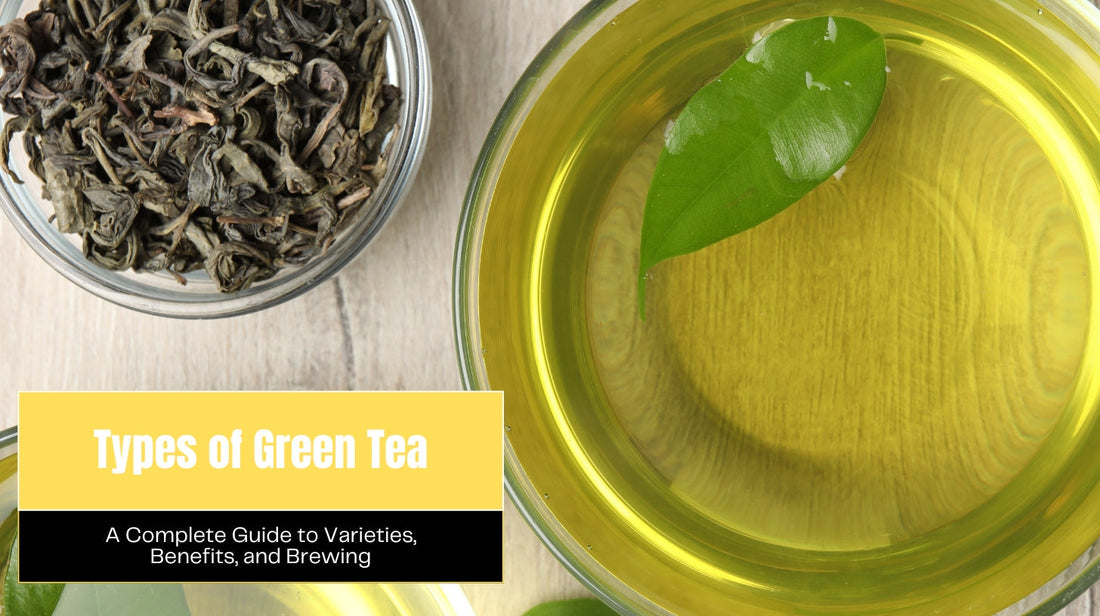
Types of Green Tea: A Complete Guide to Varieties, Benefits, and Brewing
Green Tea Is Not Just “One Tea”
When someone says “green tea,” you probably picture a simple cup with a mild, grassy flavor. But here’s the secret: green tea is not a one-size-fits-all drink. There are dozens of varieties, each with its own unique taste, aroma, and even health benefits.
Whether you’re curious about Japanese green tea, Chinese green tea, or flavored green teas like peach or mint, this guide will walk you through the most popular types of green tea, how they’re made, and why you might fall in love with one more than the others.
And don’t worry—I’ll share my top picks from DanfeTea.com so you know where to start your tea adventure.
Related Blog
| Peach Sweet Tea Recipe: How to Make the Perfect Homemade Iced Tea |
What Is Green Tea?
Before we dive into the different varieties, let’s clear up a common question: What exactly is green tea?
Green tea comes from the same plant as black tea, Camellia sinensis, but the difference is in how it’s processed. Green tea is lightly oxidized (unlike black tea), which preserves its natural green color and delicate, fresh flavors.
This light processing also means green tea keeps more antioxidants, making it one of the healthiest drinks in the world.
👉 Try Danfe’s Green Tea |
1. Sencha: Japan’s Everyday Green Tea
Sencha is the most popular tea in Japan and accounts for nearly 80% of their tea production.
- Flavor profile: Fresh, grassy, slightly sweet, with a light umami kick.
- Best for: Everyday sipping, especially in the morning.
- Brewing tip: Use cooler water (around 160–170°F) for a sweeter taste.
2. Matcha: The Famous Powdered Tea
Matcha has taken the world by storm—you’ve probably seen it in lattes, smoothies, and even desserts.
- Flavor profile: Rich, creamy, vegetal, with a sweet aftertaste.
- Health benefits: High in antioxidants and provides a calm, focused energy.
-
Fun fact: With matcha, you’re consuming the whole leaf in powdered form, making it extra potent.
3. Dragon Well (Longjing): China’s Legendary Green Tea
One of the oldest and most famous Chinese teas, Dragon Well (or Longjing) is celebrated for its flat, hand-pressed leaves.
- Flavor profile: Smooth, nutty, and slightly sweet.
- Best for: Afternoon tea or pairing with light meals.
- History note: Dragon Well has been enjoyed by emperors and poets for centuries.
4. Gunpowder Green Tea: The Bold One
If you like bold flavors, Gunpowder green tea is for you. Its tightly rolled pellets unfurl in hot water, releasing a smoky, slightly astringent taste.
- Flavor profile: Bold, smoky, earthy.
- Best for: Strong tea drinkers or Moroccan Mint Tea blends.
- Fun fact: Its rolling method helps preserve the leaves longer, making it great for storage.
5. Jasmine Green Tea: A Floral Classic
Jasmine green tea is one of the most loved flavored teas worldwide. Green tea leaves are scented with jasmine blossoms, creating a calming, aromatic cup.
- Flavor profile: Light, floral, and refreshing.
- Best for: Evening relaxation or pairing with desserts.
- Health note: Same antioxidant benefits as plain green tea, with added aroma therapy.
6. Hojicha: The Roasted Comfort Tea
Unlike most green teas, Hojicha is roasted, not steamed, giving it a unique toasty flavor.
- Flavor profile: Nutty, caramel-like, with almost no bitterness.
- Best for: Evenings (it’s lower in caffeine).
- Fun fact: Because of its gentle flavor, Hojicha is often served to children and elders in Japan.
7. Genmaicha: The Popcorn Tea
Genmaicha blends green tea with roasted brown rice. Some rice grains pop during roasting, giving it the nickname “popcorn tea.”
- Flavor profile: Toasty, nutty, slightly sweet.
- Best for: Afternoon tea or pairing with savory dishes.
- Fun fact: Once considered a “poor man’s tea,” now it’s a gourmet favorite.
8. Gyokuro: The Shade-Grown Luxury Tea
Gyokuro is one of Japan’s most premium teas. The leaves are shaded for 20+ days before harvest, increasing their chlorophyll and creating a rich umami flavor.
- Flavor profile: Sweet, savory, mellow.
- Best for: Special occasions.
- Brewing tip: Use very cool water (around 140°F) to bring out the sweetness.
9. Flavored Green Teas: Fun and Versatile
Beyond traditional varieties, you’ll find endless flavored green teas—from lemon and mint to fruity blends like peach.
These teas are perfect for beginners who find plain green tea too grassy.
Health Benefits of Green Tea
Green tea is often called a “super drink,” and for good reason. It’s linked to:
- Boosting metabolism and supporting weight loss.
- Improving brain function and focus.
- Reducing risk of heart disease.
- Supporting immunity with antioxidants.
-
Promoting relaxation thanks to L-theanine.
No wonder it’s been cherished for centuries.
Brewing Tips for the Perfect Cup
- Water temperature: 160–185°F (70–85°C).
- Steeping time: 2–3 minutes (avoid bitterness).
- Ratio: 1 teaspoon leaves per 8 oz water.
- Experiment: Each type of green tea has its own sweet spot—don’t be afraid to play around
Final Thoughts
Green tea is a world of flavors waiting to be explored. From the everyday freshness of Sencha to the luxurious depth of Gyokuro, each variety has its own charm. Whether you’re just starting your green tea journey or looking to expand your collection, experimenting with different types is part of the fun.
For authentic, high-quality teas, explore DanfeTea.com. From classic Sencha to flavored Peach Green Tea, you’ll find the perfect match for your taste buds.
Ready to find your perfect green tea?
Explore the full collection at DanfeTea.com and elevate your tea experience today.
FAQs About Types of Green Tea
Q1: What type of green tea is best for beginners?
Jasmine or Sencha—they’re smooth and easy to enjoy.
Q2: Which green tea has the most caffeine?
Matcha and Gyokuro generally have higher caffeine compared to other varieties.
Q3: What’s the healthiest type of green tea?
All green teas are healthy, but Matcha is often considered the most nutrient-dense.
Q4: Can I make iced green tea?
Absolutely! Sencha, Jasmine, and flavored green teas like peach are perfect for iced tea.
Q5: Can I reuse green tea leaves?
Yes—many high-quality green teas can be steeped 2–3 times.


